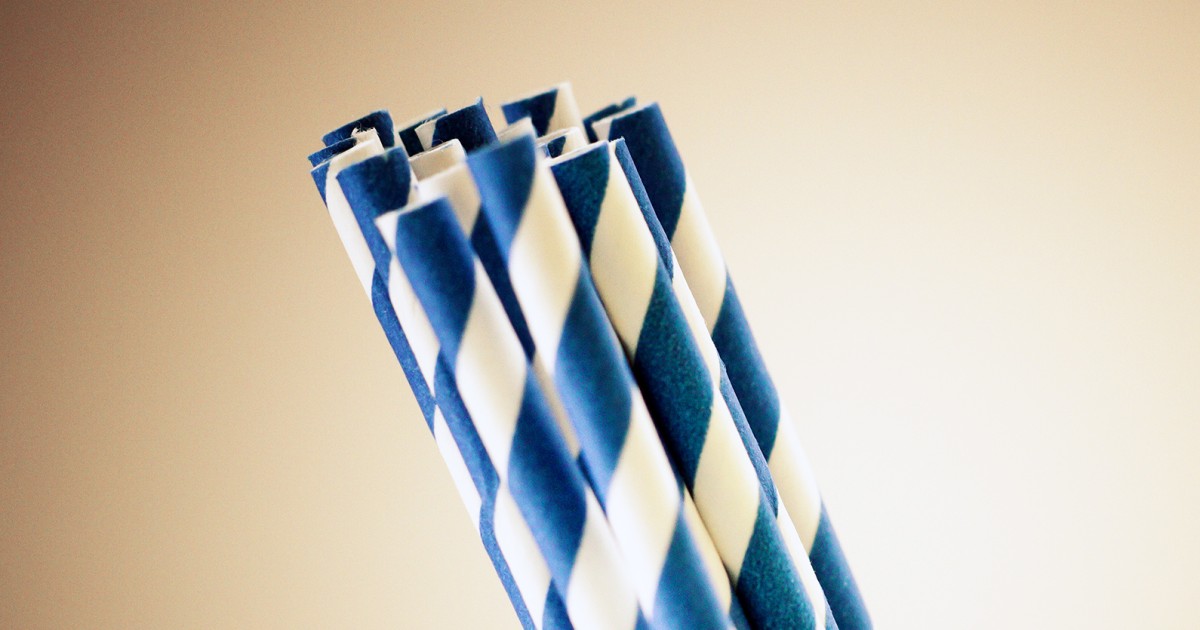
Some paper and bamboo straws contain so-called “forever chemicals” that could make them a less-than-ideal alternative to plastic, researchers have found.
Scientists in Belgium recently tested dozens of straws from supermarkets, retail stores and fast-food restaurants in the country, and found that the majority contained PFAS — a family of synthetic chemicals used in the manufacture of consumer products because they can resist stains, grease and water.
The researchers sampled 39 brands of straws made of paper, bamboo, glass, stainless steel and plastic. Of those, 27 were found to contain PFAS, though the concentrations were low.
The results were published Thursday in the journal Food Additives and Contaminants.
PFAS, an acronym for per- and polyfluoroalkyl substances, are often referred to as “forever chemicals” because they linger almost permanently in air, water and soil. They are frequently detected in food wrappers, cosmetics, carpet, furniture and textiles such as raincoats or workout clothes.
Of the straws tested in the study, those made of paper were the most likely to contain PFAS: The chemicals were detected in 18 out of 20 brands. Four out of five bamboo straws sampled contained PFAS, compared to three out of four plastic straws and two out of five glass straws. All five stainless steel straws analyzed were PFAS-free.
Previous research in the U.S. has also detected PFAS in paper and other plant-based straws, among many other types of cookware and packaging.
Exposure to PFAS can be associated with low birth weight, high cholesterol, thyroid disease and an increased risk of kidney and liver cancers, but researchers are still learning about these health risks and aren’t sure which levels of exposure are problematic.
Thimo Groffen, an author of the new study and environmental scientist at the University of Antwerp, said it’s not clear whether the manufacturers of the straws he analyzed are intentionally adding PFAS as a waterproof coating. Other possibilities, he said, are that PFAS accidentally winds up in straws during the production process, or that bamboo straws have trace amounts of PFAS due to plants being grown in contaminated soil.
Graham Peaslee, who studies PFAS at the University of Notre Dame and was not involved in the new research, said it’s possible manufacturers aren’t testing for the chemicals in their own products.
“All the straw manufacturers should take warning and say, ‘Hey, do we use this stuff?’ Because at the moment, they’re not even asking that question,” Peaslee said.
Groffen said straw users probably don’t need to panic about their individual risk.
“This is just one very small source of additional exposure which could be easily avoided, but I don’t expect straws themselves to be very harmful,” he said.
But he added that because PFAS accumulate in the body, people should ideally reduce exposures where they can: “It all adds up together with other exposure routes and the combination could cause health effects,” he said.
Does PFAS leach into food and water?
There is no federal limit for PFAS in food packaging in the U.S., though some states have their own restrictions. The Food and Drug Administration allows PFAS to be used in certain food processing equipment and as a grease-proofing agent in paper food packaging.
The Environmental Protection Agency, meanwhile, has proposed limits for PFAS in drinking water but not yet issued a final rule.
Keith Vorst, director of the Polymer and Food Protection Consortium at Iowa State University, said some of the straws in the study exceeded the proposed EPA concentrations for water. However, he pointed out that the researchers didn’t test whether PFAS leaches from the straws into beverages, or whether using a straw necessarily causes someone to ingest the chemicals.
Plus, Vorst said, he has detected far higher concentrations of PFAS in drink carriers, take-home containers and microwave popcorn bags.
“I have a little fear about, ‘OK, now let’s focus on straws’ when we have much, much bigger issues that are contaminating the environment,” he said.
Peaslee said the amount of PFAS that transfers from packaging to food and drink is generally minimal, especially if the items aren’t in contact for very long.
“If you let a straw sit for a day, you’ll get some in the water, but how many of us leave our straw in the water for a day and then still drink out of it?” he said.
Weighing the harms of paper versus plastic straws
Various states, including California, Colorado, New York and Oregon, have banned plastic straws from food establishments in the last five years, and chains like Starbucks have phased them out.
The main reason is that the straws generally can’t be recycled, so they wind up in landfills, get burned in incinerators or become litter that contaminates oceans, rivers, lakes and streams. Since plastic doesn’t decompose easily, it can persist in the environment for up to 200 years, threatening the lives of marine mammals.
Paper and bamboo straws have risen in popularity as alternatives, but researchers said the cure is sometimes not much better than the disease.
“If they come with PFAS on them, they’re not so eco-friendly anymore,” Peaslee said.
PFAS can leach out of landfills into water and soil, and have toxic effects on animals, including liver damage or reproductive issues. Groffen’s study detected one particular compound that’s highly soluble in water, trifluoroacetic acid, in five paper straws and one bamboo straw.
But Groffen said plant-based straws are still better for the environment than plastic.
“I still would expect plastic straws to be more harmful to the environment because of course you also have the degradation of the plastics into microplastics that can be consumed by animals,” he said.
The researchers interviewed agreed that stainless steel straws are preferable over paper, bamboo or plastic, but they questioned whether people will adopt them widely.
“If we could all switch to stainless steel, that’d be great,” Vorst said. “I don’t think it’s practical.”






